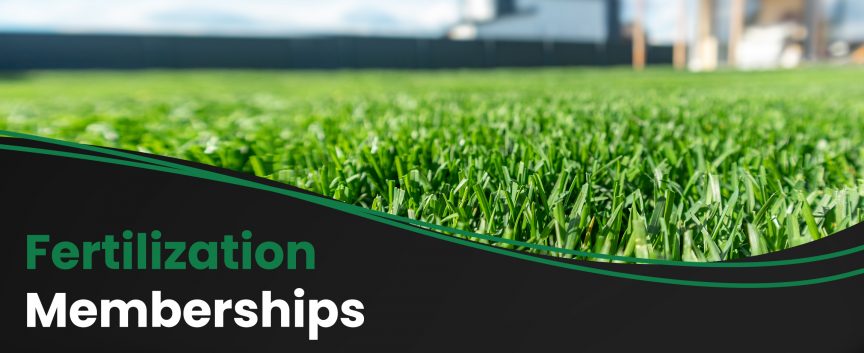HOW IT WORKS:
By entering your address below, you will be redirected to a secure site to select and pay for your Fertilization Membership Package.
About Our 6-Step Fertilizing Program
A complete program to meet your lawn’s needs
Step 1 and Step 2 – Weed Control + Fertilizer
These 2 steps happen in the early spring and then again in the late spring and are designed to control broadleaf weeds and crabgrass. Pre-emergent is a herbicide that is designed to protect lawns from emerging weeds. Many people think pre-emergent will kill weed seeds along with old, and pre-existing weeds but this is not true. When applied correctly, pre-emergent works as a preventative after the germination period of weed seedlings to stop the development of those weed. However, it will not harm or kill old existing weeds. Pre-emergent plus a slow-release fertilizer is used in the first two steps in a fertilizing program to control grab grass, watergrass, foxtail, and other grassy weeds.
The Quality Irrigation’s team of lawn professionals understands how post-emergent and pre-emergent herbicide work together to control weeds in your yard.
Step # 3 Grub Control + Fertilizer
Applied mid-June through July and will provide excellent protection against the next generation of grubs.
Lawn grubs are pale white, squirmy larvae that can destroy your lawn from the ground up, munching on roots until your grass dies off. Once the damage starts the grubs can take over your lawn fairly quickly.
There are several signs that you may have grubs:
- Brown patches in your lawn? Lookout for odd shaped dead spots left by hungry grubs
- Does your grass feel loose, spongy or bouncy?
- Animals hanging out and feeding in your grass? They may be enjoying your grubs.
- Moths and beetles flying around at grass level? White grubs are larval stage of beetles.
- Have you seen any grubs? If you suspect them, you can check using a shovel – or better yet, call the Quality Irrigation professionals!
- Severe damage includes turf detachment. This is a sure sign of grubs and needs attention right away.
The best grub control is early prevention. The Quality Irrigation grub control step includes a slow-release fertilizer will provide your lawn with the nutrients needed to deal with the stress of summer.
Step #4 Slow-release Fertilizer
An additional round of slow-release fertilizer and soil enhancer in the late summer promotes strong root development. A balanced slow-release fertilizer with micronutrients to help provides your lawn with the ability to recover from the stresses of the summer heat and humidity.
Step #5 Fall Fertilizer
A balanced fertilizer continues to provide your lawn with the nutrients they need to grow and stay healthy. The fall fertilizer also enhances a deep green fall foliage. This step is completed in September and early October.
Step# 6 Winterizer / Late Season Fertilizer
As we begin to prepare for our Nebraska winters, so does our lawn. Beginning in October, and throughout the rest of the season, a slow-release fertilizer provides the winterization and nutrients your lawn needs to maintain healthy over the winter and a quick start to the spring season.
Don’t forget to overseed and aerate your lawn.
We are often asked if it is a good idea to complete aeration and seeding at the same time. The answer is, Yes! We recommend overseeding directly after aerating, and our lawn care professionals perform these tasks for most of our customers on the same day. Aeration provides the perfect place for seeds to fall into and grow. The perfect combination.
The other question we are often asked is: when should I aerate and overseed? The best time of year to aerate and seed a lawn is in the fall. Warm soils, cool nights and dying annual weeds make fall conditions the ideal time for aeration combined with overseeding. That said, aeration and overseeding can be completed in the spring and as early as mid-August. Let’s discuss what’s going on with your lawn and determine the best time in order to meet your needs, and the needs of your lawn.
